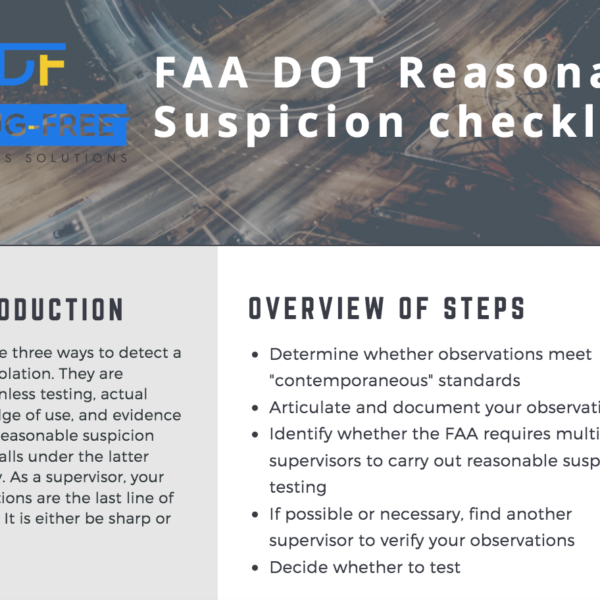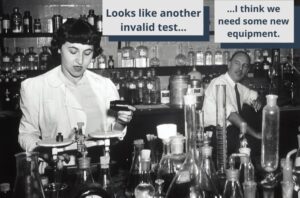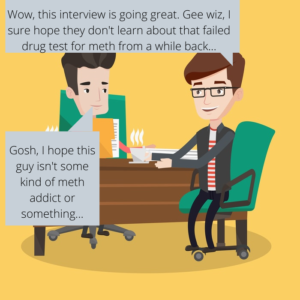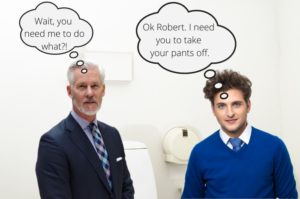Your supervisors are responsible for making reasonable suspicion decisions whenever it is appropriate to do so. To make sure that they know whether a reasonable suspicion test is both warranted and allowed by your agency, you should provide them with a reasonable suspicion checklist.
Because while the reasonable suspicion decision-making and testing process isn’t highly complex, there are some facts you must know in order to do it properly. And it is unlikely that all of your supervisors know these facts.
If they have a reasonable suspicion checklist on hand that they can refer to, though, it is not an issue that they don’t know everything. Whenever they become suspicious of an employee, they can refer to the checklist.
Because when making their decision, supervisors need to take into account the following: “context,” “content,” requirements, and the final “measuring stick” for making a decision. Each step is important to making the right call.
The Proper Context for Reasonable Suspicion Testing
Context refers to two things. First, whether observations meet “contemporaneous” standards. Contemporaneous means that the observations are of current drug and alcohol use. The supervisor must think the employee would fail a drug or alcohol test at that very moment.
Second, whether the supervisor suspects the employee of drug or alcohol use. The standards for each differ. If alcohol is the suspected substance, the employee must be about to start, performing, or just completing a safety-sensitive task. If a drug is the suspected substance, then the employee must be presently at work. Whether they’re performing a safety-sensitive task does not matter.
If the supervisor’s drug and alcohol-related observations meet the described context, then the supervisor can proceed to the next step — “content.”
The “Articulable” Content of a Reasonable Suspicion Decision
The supervisor must be able to articulate, meaning write down, her observations of the suspected employee. The observations must be actual observations rather than impressions.
An example of an observation would be “Alexa’s eyes were unusually bloodshot.” Conversely, an example of an impression would be “Jonathon’s just seemed a little hazy and off.”
When it comes to reasonable suspicion testing decision-making, the supervisor must have solid basis, and she must articulate that basis by writing it down.
In our reasonable suspicion checklist, we list out many of the possible observations that can lead to drug and/or alcohol use suspicion.
The Requirements for Carrying out a Reasonable Suspicion Drug or Alcohol Test
Several agencies require that more than one supervisor observes the suspected employees. Others prefer that the supervisor originally making the observations consults with another supervisor before deciding to test.
And the agencies often have different rules depending on whether it is drugs or alcohol suspected.
For example, the FAA requires only one supervisor for a reasonable suspicion alcohol test, but for a drug test, they require two supervisors.
We have agency-specific reasonable suspicion checklists that lay out the rules on number of supervisors that must be involved in the observation process. So when your supervisors suspect an employee of drug or alcohol use, they will know whether they need to consult another supervisor.
The Final Decision
Then comes the final decision. Supervisors must ask themselves a few important questions when making the final call:
- Are the observations coming from chronic, long-term issues, or are they coming from current use? Especially when supervisors suspect alcohol, it is important that the substance abuse is current.
- Is it drug or alcohol use suspected? As discussed earlier, the answer here will change the requirements for testing.
- Do you have actual knowledge? If so, go ahead and test.
Also, one more note. Don’t assume that personal and/or performance issues necessarily mean a substance issue. While one can lead to the other, you still need solid evidence of use to pull the trigger on a reasonable suspicion test. Remember the difference between an observation and an impression.
Conclusion: Get a Reasonable Suspicion Checklist Today
Supervisors must have quite a bit of knowledge when determining reasonable suspicion to test. Not only must they know the signs and symptoms of current drug and/or alcohol use, they must also know the rules for how many supervisors must take part in the decision.
They must understand the difference between an observation and an impression. And they must know the importance of the drug and alcohol use being current rather than chronic.
Having a reasonable suspicion checklist on hand is a big help. It’ll make your supervisors’ jobs easier, preventing them from testing when they shouldn’t. And it may even prevent an accident from happening.
If you hadn’t noticed yet, we offer a free reasonable suspicion checklist that is specific to your agency. So your supervisors will know how many supervisors must be involved in the decision-making process.
Click the button below to get your free checklist now:






